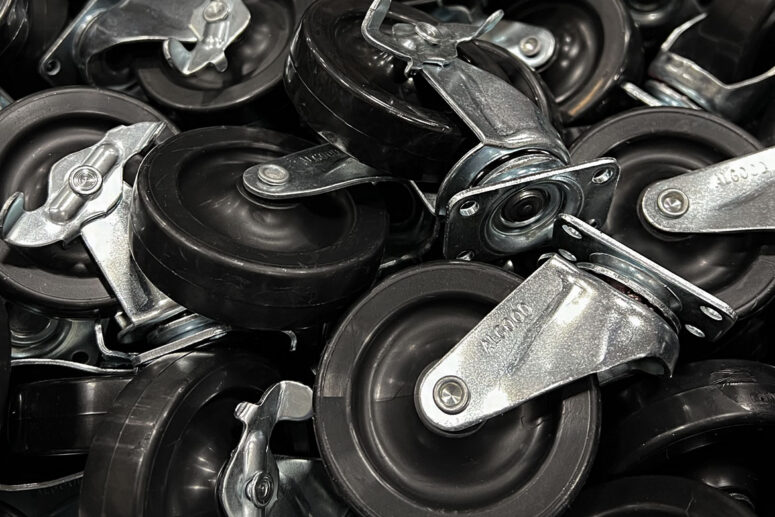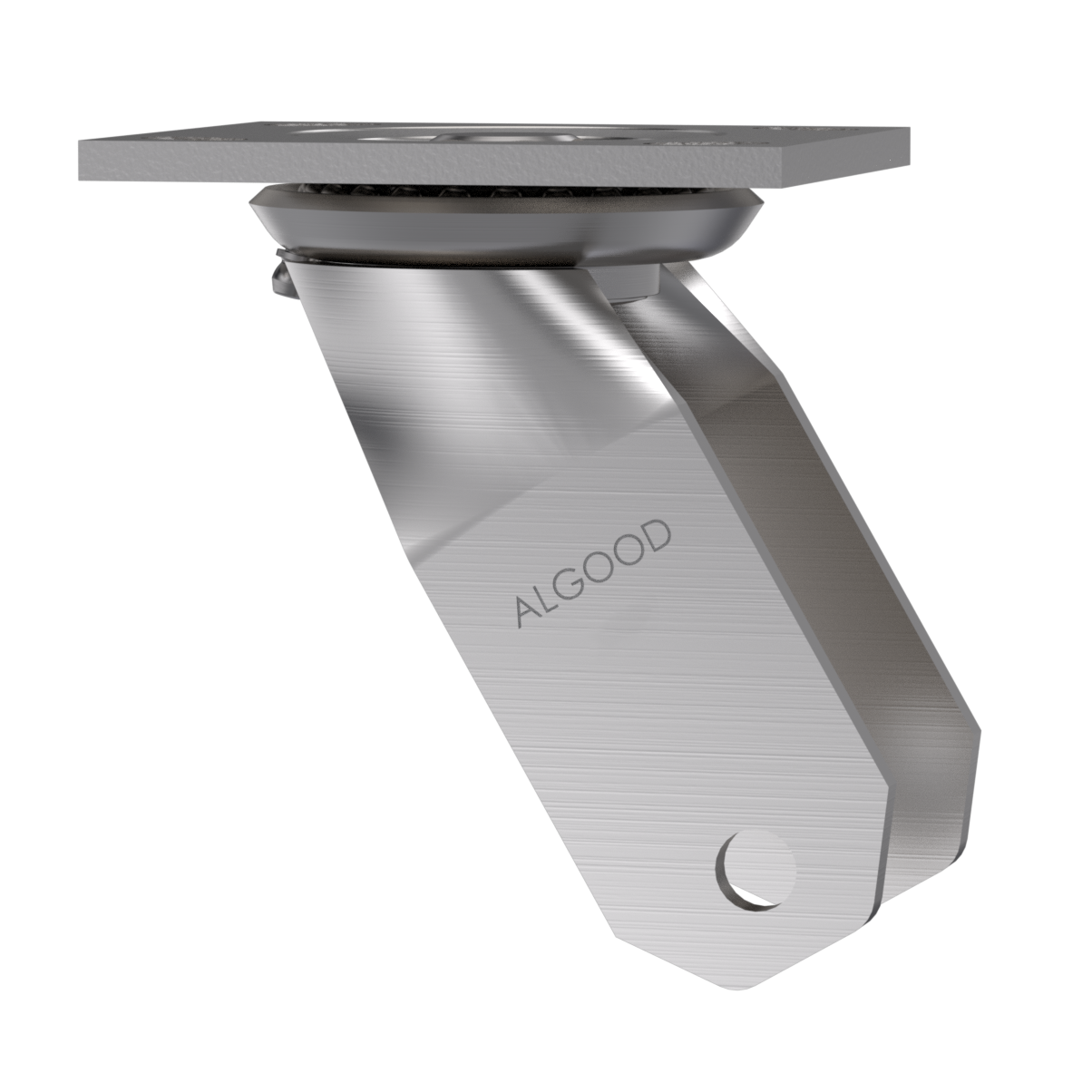Electroplating is a key component of the caster manufacturing process. In this issue of CasterU, we provide you with everything you need to know about plating.
Caster components are plated for two reasons. First, plating protects parts from corrosion. In fact, parts that are plated corrode 100 times slower than those that are untreated. Plating also enhances the appearance of parts, which is particularly important for furniture and retail fixtures.
Zinc plating is the most common coating available. It is also the most economical and requires the shortest lead times. Nickel, chrome and antique finishes are used to meet visual requirements. In this primer, we focus on zinc.
Based on the type of electroplating, there are many possible steps in the plating process. Here is a typical zinc plating process:
Soak & Cleaning — For the electroplating process to be most successful, all components must be thoroughly cleaned. Oil residue from stamping and chemicals from heat treatment processes prevent the adhesion of zinc plating and cause flaking. Parts are immersed in different acid and/or alkaline baths as part of electro-cleaning processes, which remove residue, debris, and scales at a micro level.
Zinc Plating Bath — Components are immersed in a solution that includes zinc and other chemicals. The length of time and other parameters of the solution determine the thickness of the zinc coating. At Algood, our standard coating thickness is eight microns, between 0.0003 and 0.0005 inches. The other chemicals in the solution add protection to the zinc coating and can enhance its appearance.
Dipping in the zinc solution can be done using a tumbling process where many small parts like nuts and washers are placed in a barrel and plated at the same time. That process isn’t suitable for bigger parts because fewer parts can fit economically in the barrel, and it would also result in dinging or denting. The alternative is a rack plating process in which parts are suspended through fixtures onto racks, and the complete rack with parts is dipped in the plating solution.
Rinsing & Seal Application — Components are rinsed thoroughly and dried, and often, an additional sealing solution is applied for added protection against rust.
Corrosion protection testing is done by placing parts in a salt spray test chamber and measuring the number of hours until rust appears. Actually, there are two types of rust that are considered. The first to appear is white rust, which results when the zinc coating is oxidized. Once that coating has deteriorated, the metal itself oxidizes, and red rust appears.
There are options available to enhance zinc plating. Components can be immersed in the zinc solution for longer to add thickness to the coating. Additional chemicals can be added to provide enhanced protection to the plating. This is often done for casters to be used in the computer industry, where any flaking could contaminate the whole environment.
Environmental standards are extremely critical and all Algood’s plating is ROHS compliant, meaning that no hazardous chemicals are used.
Of course, your Algood sales representative or a member of our customer service team would be pleased to talk to you about the right plating to meet your requirements.


